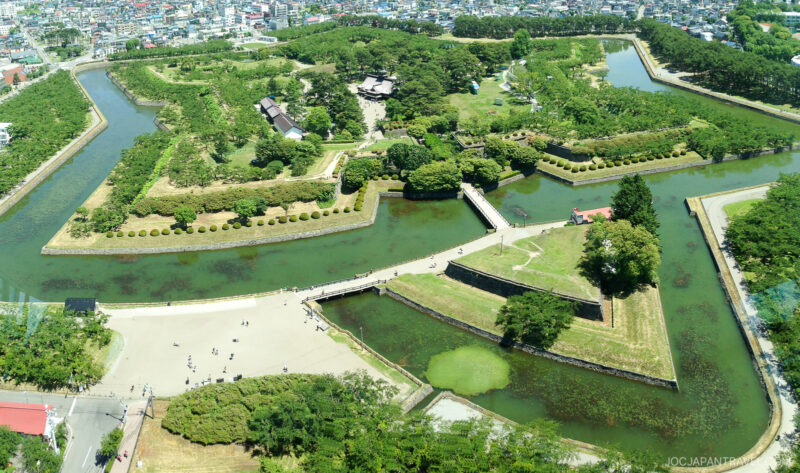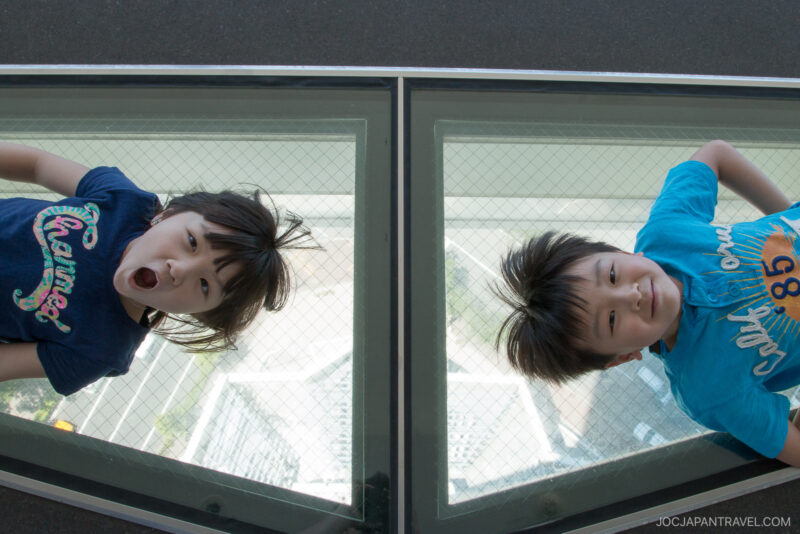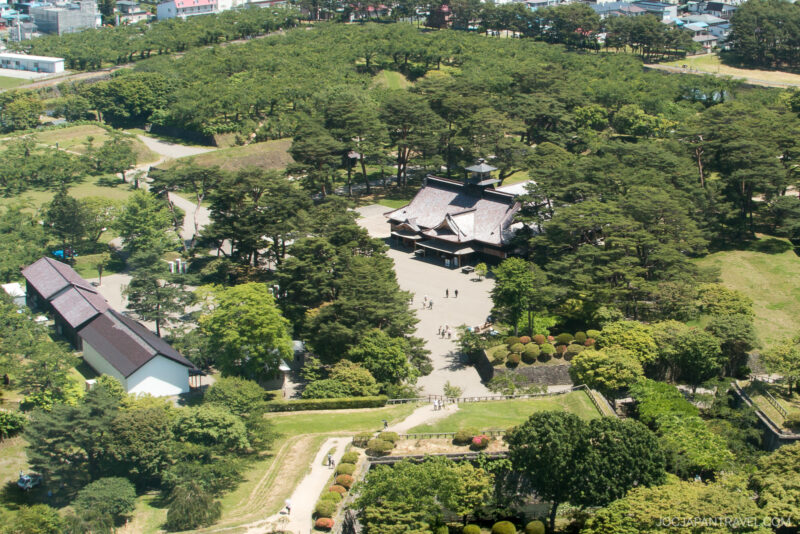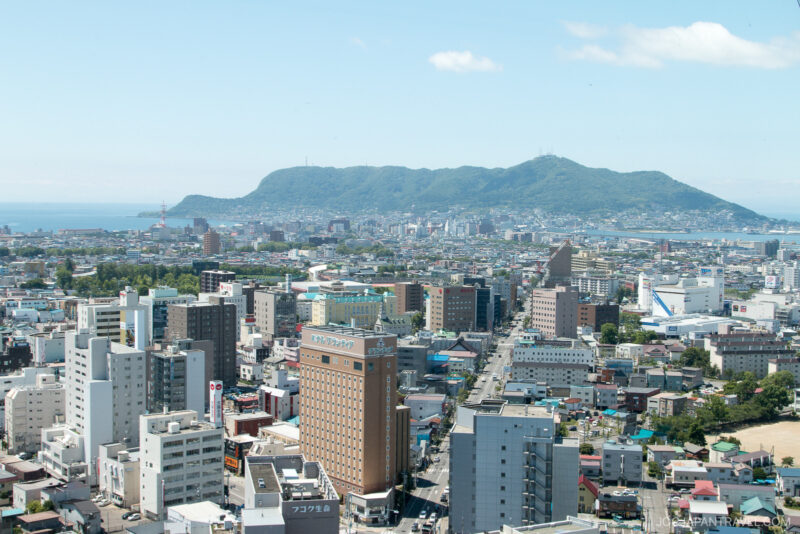This post may contain affiliate links. Please read our disclosure policy.
At Fort Goryokaku, history unfolds among cherry blossoms and panoramic views, where the unique star-shaped design echoes the drama of Japan’s last samurai battle.

A Star-Shaped Fortress Steeped in History
Fort Goryokaku (五稜郭) is one of Hakodate’s most iconic landmarks. At first glance, the park looks like a tranquil garden with wide lawns, quiet paths, and cherry trees lining the moat. But once we learned the story behind it, our appreciation grew even more.
Built in the 1860s during the final years of the Edo period, Goryokaku was Japan’s first Western-style fortress. Its unique star shape—modeled after European Renaissance forts—helped reduce blind spots during cannon battles. This innovative design became critical during the Boshin War, when the last forces of the Tokugawa shogunate made their final stand here in the Battle of Hakodate.
Today, the original fortress buildings are gone, but the grounds have been beautifully preserved as Goryokaku Park.
See the Star Shape from Goryokaku Tower

To really appreciate the layout, we started our visit at Goryokaku Tower nearby. Standing 107 meters tall (351 feet), the observation deck gave us a full view of the fortress’s five-pointed star shape. Our kids loved the glass floor panels that let them peer straight down, and we could clearly trace the moats and outer walls from above.
Inside the tower, there’s also a museum display that walks you through the history of the Boshin War and the significance of the site. It was a great way to set the stage before exploring the park itself.
Cherry Blossom Season at Goryokaku Park
We visited in summer, but it’s easy to see why spring is the most popular season. Fort Goryokaku is one of Hokkaido’s top cherry blossom spots, with around 1,600 cherry trees blooming around the moat and walkways.
If you’re lucky enough to visit in late April or early May, it’s worth timing your trip for this breathtaking display.
Exploring the Park Grounds

The walking paths inside the park are flat and family-friendly, making it easy for younger kids. The reconstructed Hakodate Magistrate’s Office (Bugyosho) sits in the center and is open for visitors interested in Edo-period architecture and administration.
We loved that you can take a peaceful stroll, and still learn something fascinating along the way. Even if you’re not a history buff, it’s a place that invites you to slow down and take it all in.
How to Get to Fort Goryokaku
Train
- From Hakodate Station, take the Hakodate City Tram (Line 2 or 5) to Goryokaku Koen Mae Station (五稜郭公園前駅).
- Walk about 10 minutes to the park entrance.
- Total travel time: 20–25 minutes.
Bus
- Local buses from Hakodate Station also stop near the Goryokaku Park area.
Taxi
- Taxi from Hakodate Station takes about 15 minutes and costs around ¥1,500 to ¥2,000.
Pro Tip: Try to visit both the tower and the park for the full experience—starting with the tower makes it easier to understand the layout once you’re walking inside the star fort.
Should You Visit Fort Goryokaku?

Yes, absolutely—Fort Goryokaku is well worth a stop if you’re visiting Hakodate. Its rare star-shaped layout and role in Japan’s late samurai-era history make it far more than just a beautiful park.
We were especially struck by the contrast between the peaceful greenery and the dramatic history behind it. And if you head up to Goryokaku Tower, the panoramic view of the fortress from above really brings it all into perspective. It’s one spot we wouldn’t skip on any Hakodate trip.
More to Explore Nearby
After exploring the star-shaped grounds of Fort Goryokaku, you’ll find more of Hakodate’s history and scenic charm close by:
- Hakodate Hot Springs – Soak in coastal onsen with ocean views, a relaxing contrast to a day of sightseeing.
- Mount Hakodate – Ride the ropeway to one of Japan’s most breathtaking night views, where the city sparkles like a jewel.
- Motomachi District – Stroll past Western churches and historic homes in this hillside neighborhood overlooking the bay.
- Kanemori Red Brick Warehouses – Browse shops and cafes in restored 19th-century buildings by the waterfront.
